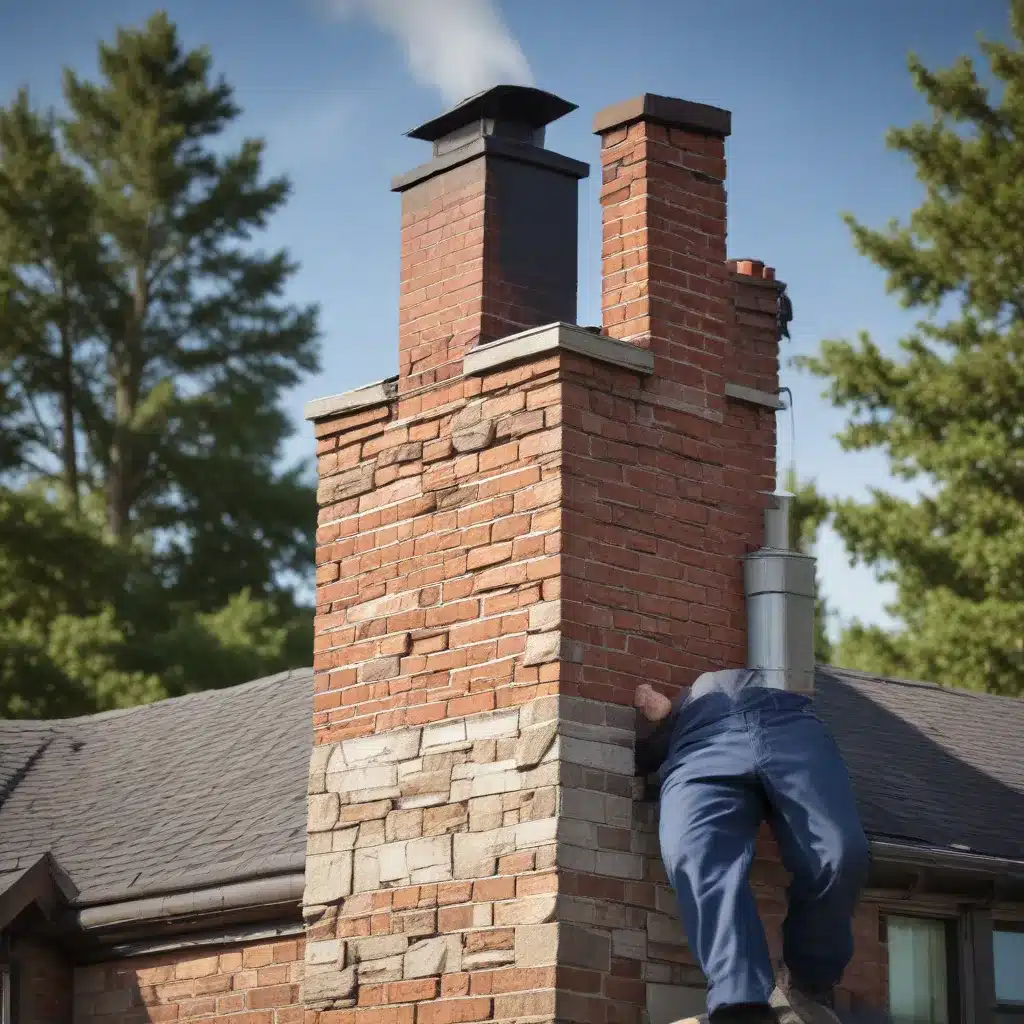
Understanding the Importance of Chimney Maintenance
Chimneys are an integral part of many homes, playing a crucial role in ventilating and safely discharging combustion byproducts. Over time, however, the masonry surrounding a chimney can deteriorate due to weathering, age, or improper maintenance. As a seasoned roofing professional, I’m here to provide you with a comprehensive guide on mastering chimney maintenance to ensure the safety, functionality, and longevity of this essential architectural feature.
Common Chimney Issues
Chimneys can face a variety of challenges that, if left unaddressed, can lead to serious problems. Let’s explore the most common issues:
-
Brick/Stone Deterioration: The constant exposure to harsh weather conditions can cause the bricks or stones in a chimney to crack, spall, or erode, compromising the stability of the structure.
-
Mortar Decay: Mortar acts as the binder between bricks or stones. Over time, mortar can deteriorate, leading to gaps, known as mortar joints, that allow water penetration and further deterioration of the chimney.
-
Chimney Leaks: Damaged flashing, cracked crowns, or faulty chimney caps can cause water infiltration, leading to moisture-related issues such as mold growth, efflorescence, or even structural damage.
These issues, if not addressed promptly, can pose significant safety risks and lead to costly repairs down the line. Regular inspections and proactive maintenance are key to keeping your chimney in top condition.
Chimney Inspection: The First Step
Before embarking on any repair work, a thorough chimney inspection is crucial. A qualified professional should conduct this inspection, examining both the interior and exterior of the chimney, including the flue, crown, flashing, and masonry. This comprehensive assessment will help determine the extent of the damage and guide the appropriate repair strategy.
Masonry Repair Techniques
Once the chimney inspection is complete, the masonry repair process can begin. Depending on the severity of the damage, various repair techniques may be employed:
Tuckpointing (Repointing)
Tuckpointing, also known as repointing, involves removing damaged mortar joints and replacing them with fresh mortar. This technique enhances the structural integrity of the chimney while preserving its original aesthetics.
Brick Replacement
In cases where individual bricks are severely damaged or missing, they need to be carefully removed and replaced. Matching the original brick type, size, and color is crucial to maintain the chimney’s visual harmony.
Crown Repair/Rebuild
The crown, or chimney cap, is a critical component that prevents water infiltration. Cracked or deteriorated crowns should be repaired or rebuilt using a high-quality mortar mix, ensuring proper slope for water runoff.
Waterproofing
Applying a waterproof sealant to the masonry surface can significantly enhance its durability by preventing water penetration. This protective barrier minimizes the effects of freeze-thaw cycles and reduces the likelihood of future damage.
Safety Considerations
Chimney repair, particularly masonry work, can involve working at heights and handling heavy materials. It is essential to prioritize safety throughout the repair process. Safety precautions include wearing personal protective equipment, using appropriate scaffolding or ladders, and adhering to local building codes and regulations.
Hiring a Professional: The Importance of Expertise
While some minor chimney repairs can be handled by homeowners, more extensive repairs or those requiring advanced masonry skills are best left to professionals. Hiring an experienced chimney repair specialist ensures that the work is conducted correctly, safely, and in compliance with industry standards.
Maintaining a Safe and Efficient Chimney
Regularly scheduled inspections and cleanings are essential for maintaining the safety and efficiency of your chimney. A professional chimney sweep service can efficiently address specific challenges related to chimneys in your local area, ensuring that your fireplace operates safely and effectively throughout the year.
During these inspections, the technician will thoroughly inspect the chimney for any signs of soot, creosote buildup, or obstructions that could pose a fire hazard or compromise the proper ventilation of your home. They will then employ specialized tools and techniques to safely remove these hazardous deposits, restoring your chimney to optimal condition.
In addition to professional cleaning, there are also preventative measures you can take as a homeowner to maintain your chimney’s health. These include:
- Regularly removing ash and debris from the fireplace
- Using seasoned hardwood as fuel to minimize creosote buildup
- Keeping your gutters clean to prevent water damage around the chimney area
By working closely with a reputable chimney sweep service and taking proactive steps to maintain your chimney, you can ensure that your home’s heating system operates safely and efficiently, providing you and your family with the warmth and comfort you deserve.
Conclusion
Chimneys are essential for the safety and functionality of your home, but they require diligent maintenance to remain in top condition. By understanding the common issues, conducting thorough inspections, and employing appropriate repair techniques, you can effectively restore your chimney and safeguard your home.
Remember, regular maintenance and prompt repairs are key to ensuring the longevity and efficiency of your chimney system. Invest in professional services when needed, and take proactive steps to keep your chimney in optimal condition. With this comprehensive guide, you can master the art of chimney maintenance and enjoy the peace of mind that comes with a well-maintained, safe, and efficient home.
For all your roofing and chimney needs in the Northampton area, Roofers in Northampton is your trusted partner. Contact us today to schedule an inspection and take the first step towards a safer, more efficient home.

